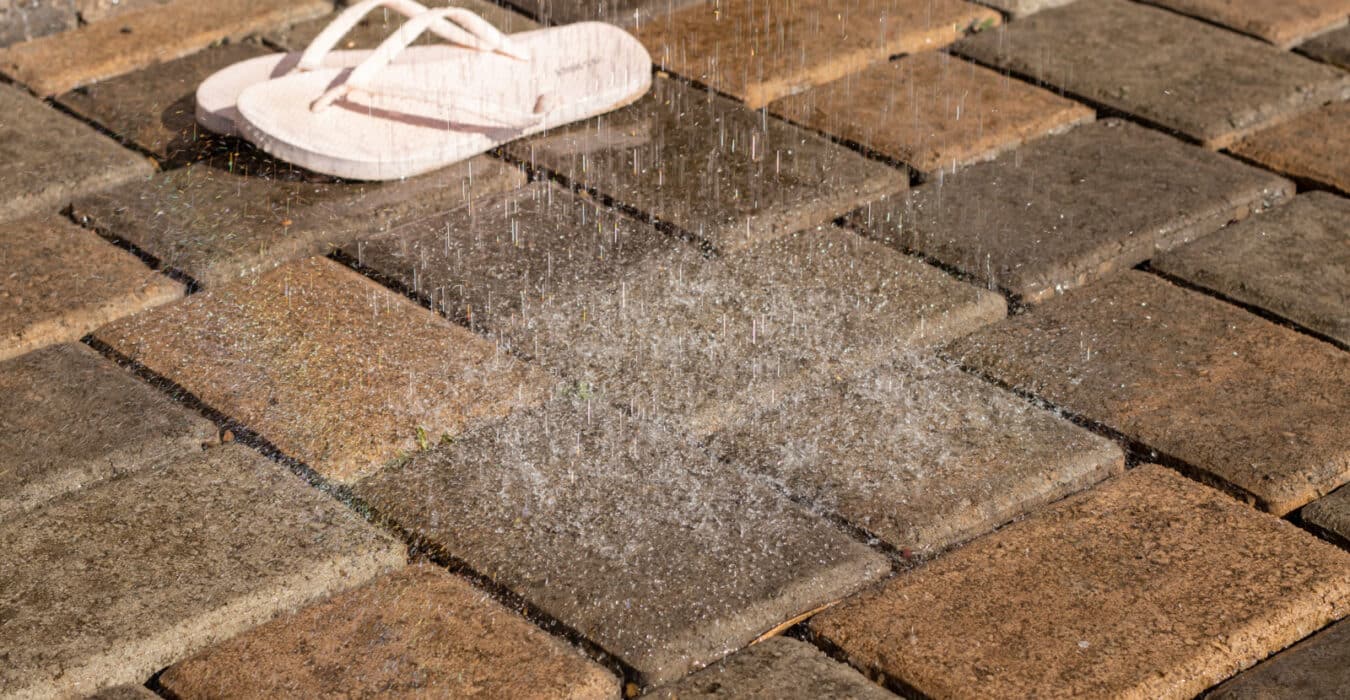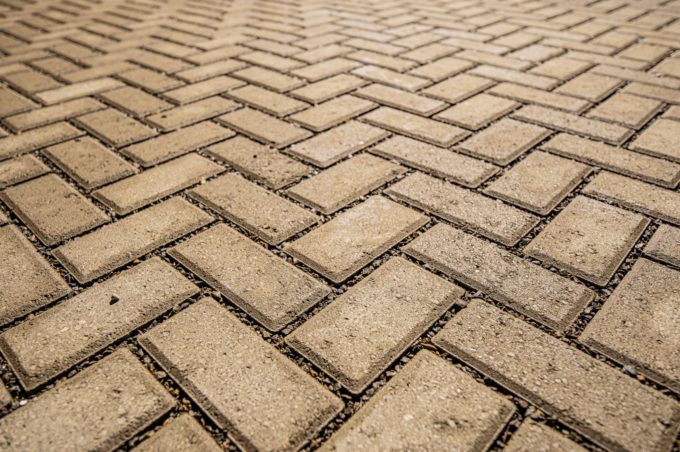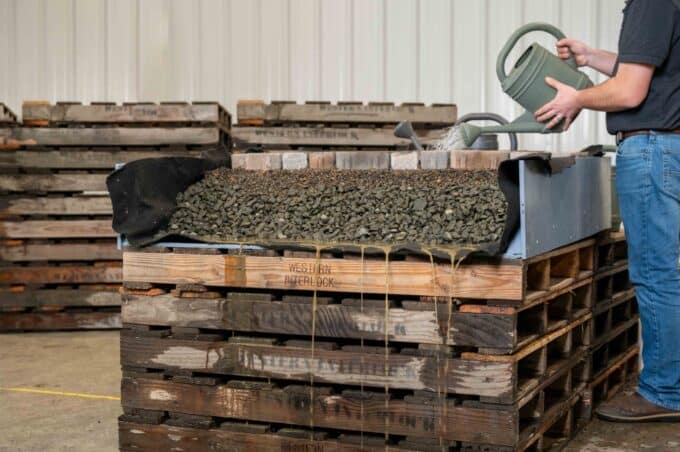Get our FREE Project Planning Guide
"*" indicates required fields
When rain hits your driveway, does it create puddles or disappear naturally? If you’re dealing with standing water, runoff problems, or that constant battle against drainage issues, you’re not alone. Most traditional hardscaping creates these exact problems.
Here’s the thing: permeable pavers aren’t just regular pavers with holes poked in them. They’re engineered systems designed to work with water instead of fighting it. And when installed correctly, they can handle up to 100 inches of rainfall per hour per square foot—far more than any storm you’ll encounter.
A common misconception is that water passes directly through the paver itself. In reality, three specific components work together to make permeable pavers actually permeable.
In this article, we’ll break down exactly how permeable pavers work, why they outperform traditional options, and what makes Western Interlock’s approach different.
What Makes Pavers “Permeable”?
Here’s what most people get wrong: permeable pavers don’t work by letting water pass through the stone itself. Instead, three key components work together to achieve that 100+ inch per hour infiltration rate.
The first component is wide joints between pavers. Standard pavers use 1/16″ joints with regular sand, but permeable pavers require 1/4″ to 3/8″ joints filled with clean, washed aggregate, like 1/4″-10 stone. This wider spacing creates the pathways water needs to infiltrate effectively.
Next comes specialized base construction. For a permeable paver project, the paver base needs to be about 30% deeper than standard installations, using clean, 3/4-inch open aggregate that creates maximum void space for water storage and filtration. This isn’t just about depth, but also creating a reservoir system that can handle heavy rainfall while maintaining structural integrity.
Finally, the joint material makes all the difference. Instead of polymeric sand, permeable pavers use crushed stone in the joints—typically 1/4″ to 3/8″ gravel. This allows for rapid water infiltration.
When you combine these three elements together, you get a system that doesn’t just look good, but actively manages water runoff, reduces flooding risk, and recharges groundwater naturally.
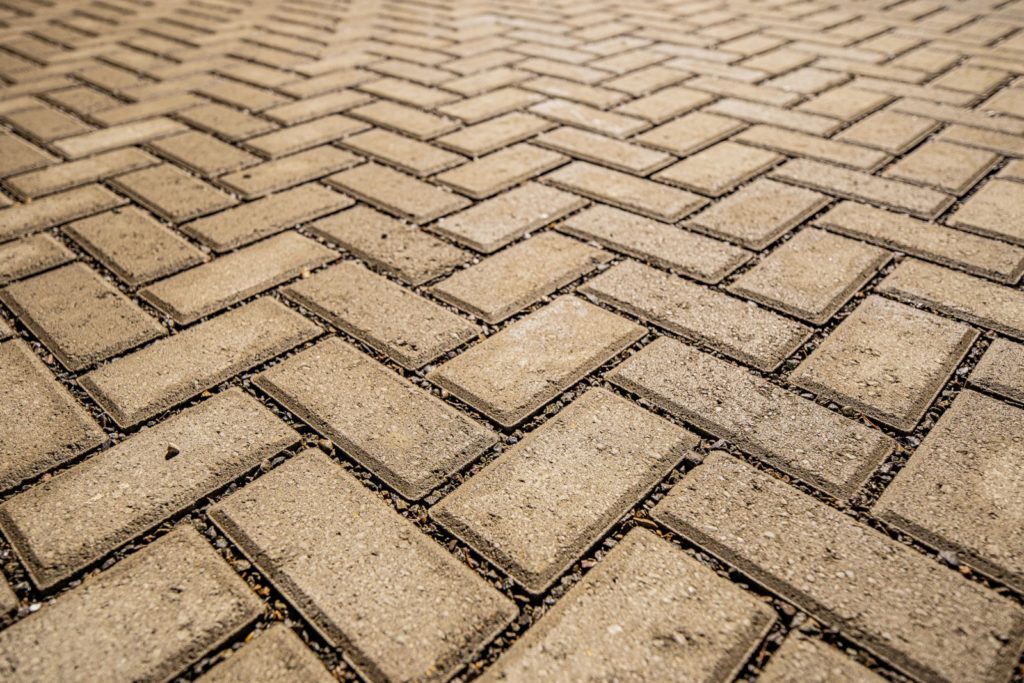
How Do Permeable Pavers Actually Work?
Think of permeable pavers as a complete water management system, not just a surface material. The process begins when rainwater hits the paver surface and immediately starts flowing through those wide joints filled with clean aggregate. Instead of pooling or running off, the water infiltrates directly into the system below.
Underneath the pavers, that specialized base acts like an underground reservoir. The clean, angular stones create void spaces that temporarily store water during heavy rainfall events. As water moves through these aggregate layers, pollutants and sediments get filtered out naturally, meaning the water that eventually reaches groundwater is cleaner than what originally fell as rain.
The final step happens gradually as the stored water slowly infiltrates into the soil below, recharging groundwater supplies instead of overwhelming storm drains. The result is impressive: permeable pavers can handle rainfall rates of 3-8 inches per hour, compared to zero infiltration from traditional surfaces. Even during the Pacific Northwest’s heaviest storms, properly installed permeable systems keep working without missing a beat.
Why Choose Permeable Pavers? Here Are the Key Benefits
The most immediate benefit you’ll notice is water management that actually works. No more standing water in your driveway after storms, no more ice patches forming in winter, and no more watching runoff carry away your topsoil while creating erosion problems elsewhere on your property. It’s the kind of practical improvement that makes you wonder why all hardscaping isn’t designed this way.
From an environmental perspective, permeable pavers reduce stormwater runoff by up to 80%, recharge groundwater naturally, and filter pollutants before they reach water supplies. This isn’t just good for the environment—it’s hardscaping that works with nature instead of against it. Many municipalities are starting to recognize this value through stormwater fee reductions, direct incentives, or expedited permitting for permeable installations.
Quality permeable pavers also offer surprising durability advantages. They often last longer than traditional options because they’re not dealing with freeze-thaw damage from trapped water. The maintenance requirements are minimal, only requiring the occasional cleaning to keep joints from clogging with debris. Add on top that despite their functional benefits, they offer all the same design flexibility as traditional materials, available in multiple colors, textures, and patterns that complement any architectural style.
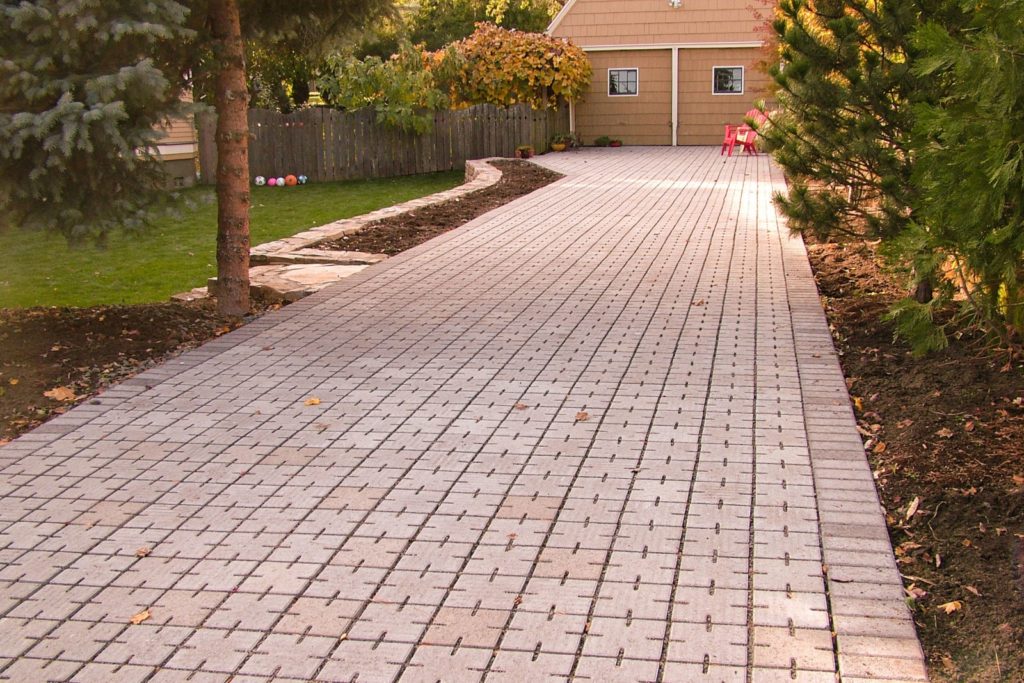
When Should You Choose Permeable Over Traditional Pavers?
Geographic considerations play a major role in this decision. The Pacific Northwest, with its heavy seasonal rainfall, represents ideal permeable paver territory. But, the benefits extend to anywhere that experiences intense storms, poor drainage, or persistent standing water problems. If you’ve ever dealt with puddles that take hours to disappear or ice patches that form from trapped water, you understand the problem permeable pavers solve.
The type of project also influences the choice significantly. Driveways, patios, and walkways that typically see runoff issues are perfect candidates for permeable systems. These installations shine particularly in areas where you want to reduce ongoing maintenance or eliminate the safety hazards of ice buildup during winter months.
The regulatory landscape is shifting in favor of permeable solutions as well. Many municipalities now offer stormwater fee reductions for permeable installations, with some requiring permeable surfaces for new construction projects. It’s worth checking your local codes as you might be able to discover incentives that make the choice financially attractive as well. When you factor in reduced drainage infrastructure needs, potential municipal incentives, and lower long-term maintenance costs, the math often favors permeable options even when initial material costs are slightly higher.
Western Interlock’s Permeable Paver Solutions
At Western Interlock, we offer permeable pavers that are engineered specifically for Pacific Northwest conditions—from heavy rainfall seasons to freeze-thaw cycles that can compromise other products. Our catalog contains three key permeable paver products that deliver both performance and aesthetic appeal.
Holland Permeare™ provides compact durability for high-traffic areas and is often installed in a 45° herringbone pattern to maximize both strength and drainage performance. This makes it perfect for driveways that need to handle vehicle loads while managing water runoff effectively.
Camino Permeare™ combines the classic charm of cobbled surfaces with modern permeability, offering the same timeless look you love with the added benefit of natural stormwater management.
For contemporary designs, Park Permeare™ features a slim, rectangular profile with clean lines that work beautifully in modern hardscaping projects.
What sets our permeable systems apart is the complete support we provide. Every installation includes comprehensive specifications, base preparation guidelines, joint material recommendations, and technical support throughout your project. We also maintain connections with certified contractors who understand the specific requirements of permeable installations, because when it comes to water management, proper installation is essential for long-term performance.
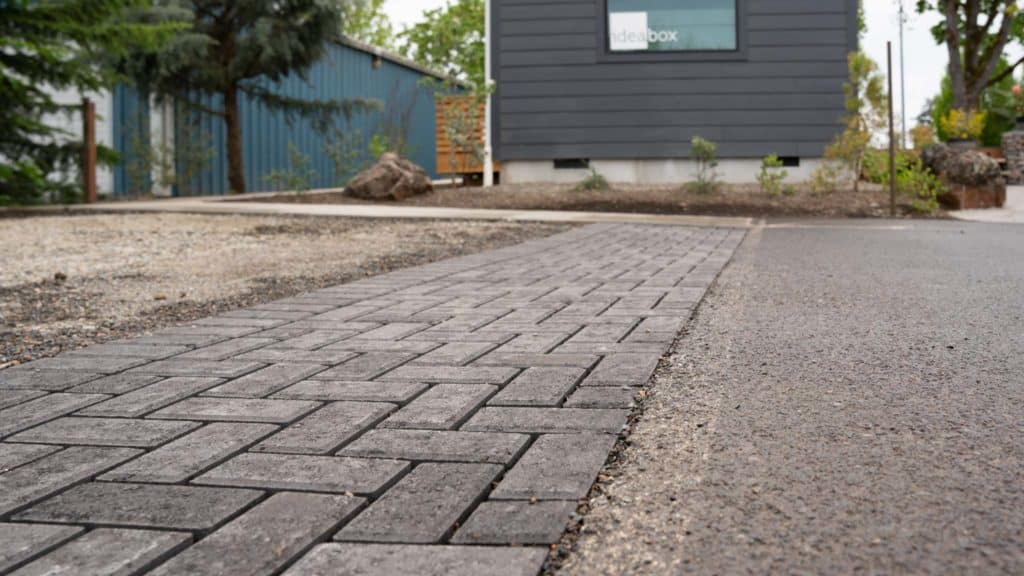
Your Next Hardscaping Project Starts Here
Permeable pavers solve the water management problems that plague traditional hardscaping—while delivering the same beauty and durability you expect from premium materials.
From eliminating standing water to reducing runoff and recharging groundwater naturally, permeable pavers work with your environment instead of against it. And with proper installation using quality materials, they’ll perform reliably for decades.
Ready to explore how permeable pavers can transform your driveway, patio, or walkway? Check out our video on How Permeable Pavers Work.
Get started today: Download our Project Planning Guide for step-by-step guidance, or connect with a member of our team to discuss your specific needs.
Because when it comes to hardscaping, we’re here to help you take the hard out of hardscaping.
Get our FREE Project Planning Guide
Tell us where to send it and we’ll email the backyard planning guide to you right away!
"*" indicates required fields


